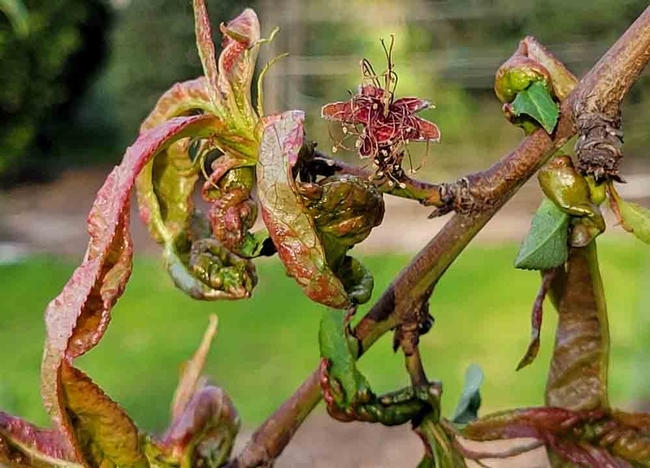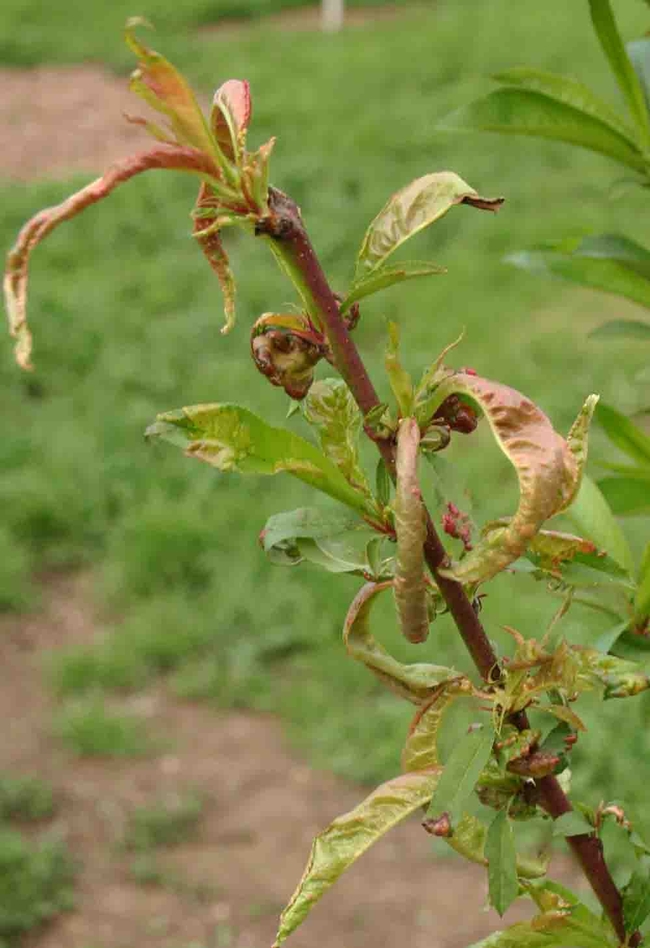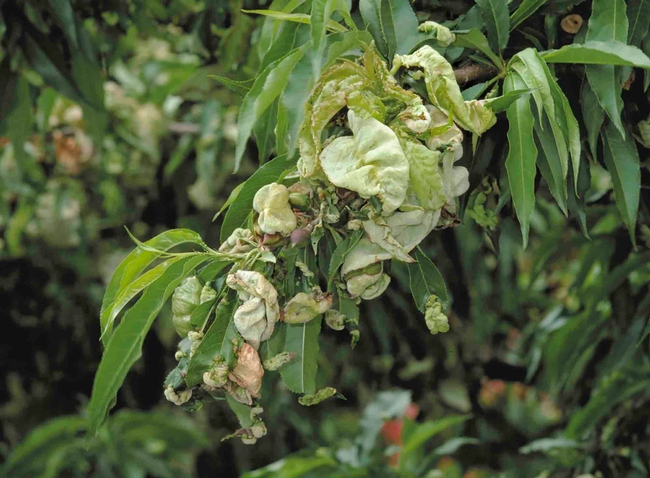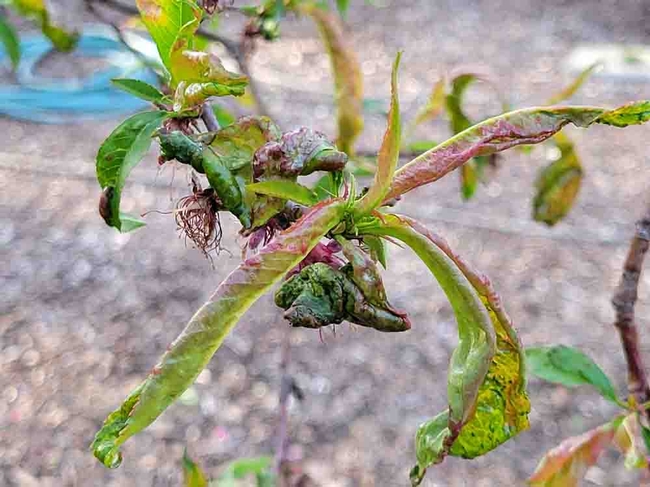If the new leaves of your peach or nectarine tree become reddish, puckered and severely distorted, chances are that peach leaf curl is the culprit. This disease is caused by the fungus Taphrina deformans and is one of the most common disease problems for backyard peach and nectarine trees here in Butte County. In addition to disfiguring leaves, leaf curl can affect the blossoms, stems and fruit of infected trees. If it is severe enough, leaf curl can significantly weaken a tree and reduce fruit production. Leaf- curl-affected leaves fall off in spring, exposing the main limbs to sunburn injury. And sunburn injury facilitates flatheaded borer attacks, which often result in limb dieback.

The best way to avoid leaf curl is to grow resistant varieties of peaches and nectarines, so if you are planning to buy fruit trees, keep this in mind. Resistant peach varieties include Frost, Indian Free, Muir and Q-1-8. Although the Frost peach variety is very resistant to leaf curl, it must receive fungicide applications in its first two to three years of growth. Red Haven peach and most of the varieties derived from it are rated “tolerant” to leaf curl. On the other hand, Redskin peach and its cultivars are rated “susceptible to highly susceptible” to the disease. Kreibich is a nectarine variety that is resistant to leaf curl.

The most common fungicides available to the home gardener contain fixed copper. The active ingredient, copper, is listed as “metallic copper equivalent,” or MCE. The higher the MCE, the more effective the product will be. Thorough coverage (by spraying the trees until they are dripping) is essential for disease control. Be aware that repeated use of copper products can result in the buildup of copper in the soil, where it may become toxic to soil organisms. The synthetic fungicide, chlorothalonil, is the only non-copper fungicide available for managing leaf curl on backyard trees. When using pesticides, always read and follow the label for usage, rates, toxicity and proper disposal. Proper protective clothing and gear (including goggles) should be used when handling any pesticides.

When the symptoms of peach leaf curl appear on a tree in the spring, nothing can be done to control the disease at that time. Removing diseased leaves or shoots does not control the disease. If your tree has leaf curl now, be sure to treat it next winter to prevent more serious problems the following spring.
For more detailed information on this topic, see the University of California Integrated Pest Management Pestnote #7426: Peach Leaf Curl Management Guidelines--UC IPM (ucanr.edu).
JOB OPPORTUNITY: UC Cooperative Extension has an opening for an individual who can provide administrative and program oversight to the Master Gardener Program, plus technical and educational training to support the creation and maintenance of gardening programs with UC CalFresh Nutrition Education Program clientele in Butte County. For more information and to apply for the Garden Education Coordinator position visit Jobs - Division of Agriculture and Natural Resources (ucanr.edu).
